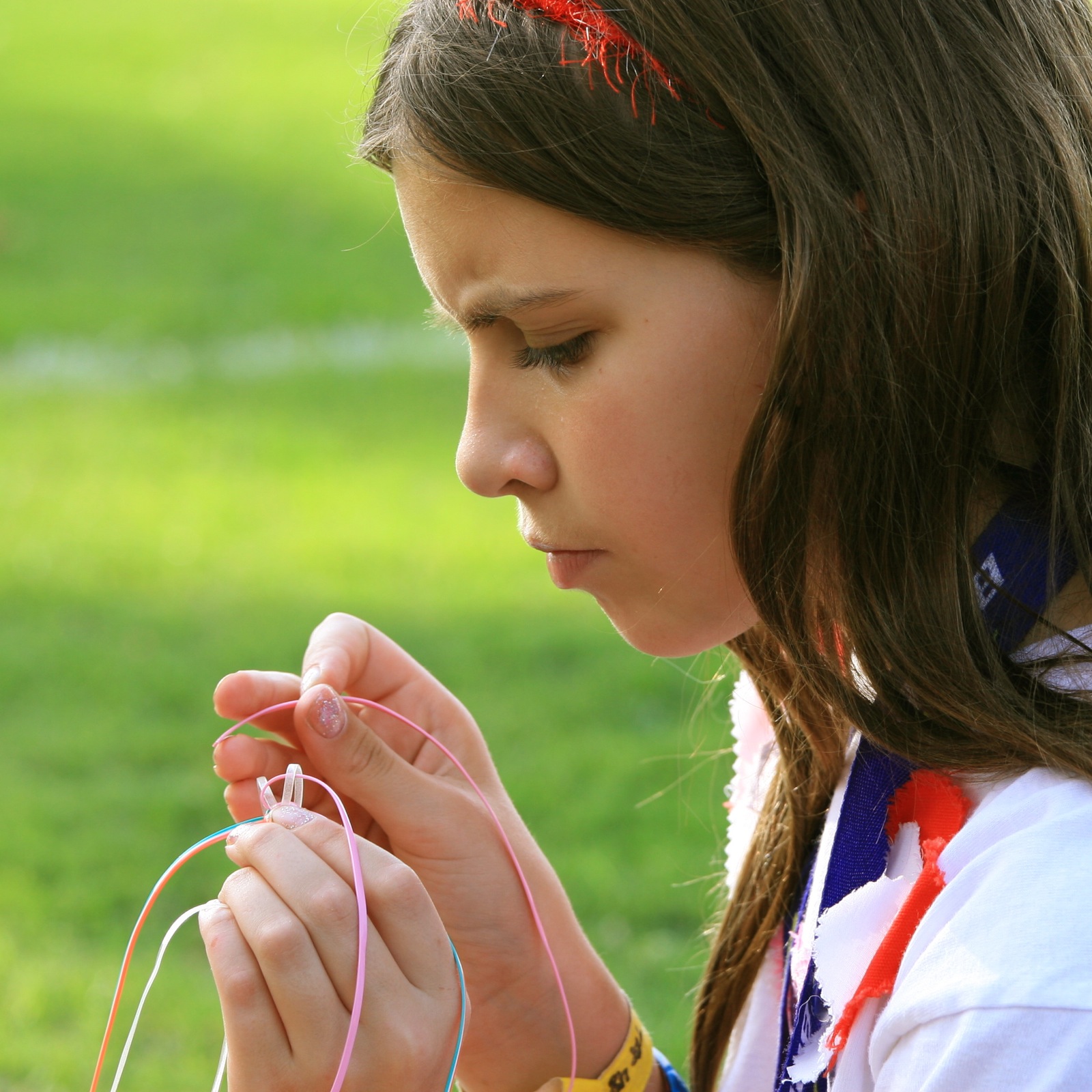
Flow (psychology)
Flow in positive psychology, also known colloquially as being in the zone, is the mental state in which a person performing some activity is fully immersed in a feeling of energized focus, full involvement, and enjoyment in the process of the activity. In essence, flow is characterized by the complete absorption in what one does, and a resulting transformation in one's sense of time.[1] Flow is the melting together of action and consciousness; the state of finding a balance between a skill and how challenging that task is. It requires a high level of concentration. Flow is used as a coping skill for stress and anxiety when productively pursuing a form of leisure that matches one's skill set.[2]
"Flow state" redirects here. For the album, see Flow State.
Named by the psychologist Mihály Csíkszentmihályi in 1970, the concept has been widely referred to across a variety of fields (and is particularly well recognized in occupational therapy).[3]
The flow state shares many characteristics with hyperfocus.[4] However, hyperfocus is not always described in a positive light. Some examples include spending "too much" time playing video games or becoming pleasurably absorbed by one aspect of an assignment or task to the detriment of the overall assignment. In some cases, hyperfocus can "capture" a person, perhaps causing them to appear unfocused or to start several projects, but complete few. Hyperfocus is often mentioned "in the context of autism, schizophrenia, and attention deficit hyperactivity disorder – conditions that have consequences on attentional abilities."[4]
Flow is an individual experience and the idea behind flow originated from the sports-psychology theory about an Individual Zone of Optimal Functioning. The individuality of the concept of flow suggests that each person has their subjective area of flow, where they would function best given the situation. One is most likely to experience flow at moderate levels of psychological arousal, as one is unlikely to be overwhelmed, but not understimulated to the point of boredom.[5]
History[edit]
Mihaly Csikszentmihályi and others began researching flow after Csikszentmihályi became fascinated by artists who would essentially get lost in their work.[8] Artists, especially painters, got so immersed in their work that they would disregard their need for food, water and even sleep. The theory of flow came about when Csikszentmihályi tried to understand the phenomenon experienced by these artists. Flow research became prevalent in the 1980s and 1990s, with Csikszentmihályi and his colleagues in Italy still at the forefront. Researchers grew interested in optimal experiences and emphasizing positive experiences, especially in places such as schools and the business world.[9] They also began studying the theory of flow at this time.[10]
The cognitive science of flow has been studied under the rubric of effortless attention.[11]
Mechanism[edit]
In any given moment, there is a great deal of information made available to each individual. Psychologists have found that one's mind can attend to only a certain amount of information at a time. According to Csikszentmihályi's 2004 TED talk, that number is about "110 bits of information per second."[13] That may seem like a lot of information, but simple daily tasks take quite a lot of information. Just decoding speech takes about 40–60 bits of information per second,[14] which is why when having a conversation, one cannot focus as much attention on other things.[15]
Generally, people have the ability to decide what they will give their full attention to. This excludes basic distinctive feelings, such as hunger and pain. However, when one is in the flow state, they are completely engrossed with the one task at hand and, without making the conscious decision to do so, lose awareness of all other things: time, people, distractions, and even basic bodily needs.[16][17] According to Csikszentmihályi, this event occurs because all of the attention of the person in the flow state is on the task at hand; there is no more attention to be allocated.[18]
The flow state has been described by Csikszentmihályi as the "optimal experience" in that one gets to a level of high gratification from the experience.[3] Achieving this experience is considered to be personal and "depends on the ability" of the individual.[3] One's capacity and desire to overcome challenges in order to achieve their ultimate goals leads not only to the optimal experience but also to a sense of life satisfaction overall.[3]
Applications[edit]
Applications suggested by Csíkszentmihályi versus other practitioners[edit]
Only Csíkszentmihályi seems to have published suggestions for extrinsic applications of the flow concept, such as design methods for playgrounds to elicit the flow experience. Other practitioners of Csíkszentmihályi's flow concept focus on intrinsic applications, such as spirituality, performance improvement, or self-help.
Global-cultural perspectives[edit]
In a global context, there is a gap in understanding how flow manifests within various socio-cultural contexts. Cross-cultural comparative studies, as suggested by Engeser and Rheinberg (2008), could delve into how flow experiences differ across societies, deepening our understanding of the concept's universality or cultural specificity.[110]
Longitudinal studies, capable of tracking flow experiences over extended periods, could offer insights into the sustained effects of flow on personal development, well-being, and performance. As Seligman and Csikszentmihalyi (2000) have suggested, such research could offer a more nuanced understanding of the concept's long-term impact.[111]